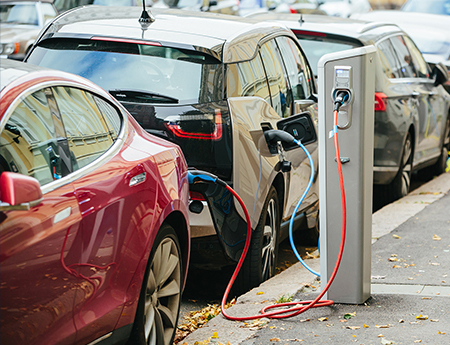Impact of Growing EV Infrastructure on Buildings
Enrique Pastor, Global Sales Vice President, e-Mobility Division (Electric Vehicle Infrastructure), Schneider Electric, talks to our host Pranjal Sharma, about how the EV Infrastructure is developing and impacting homes and buildings
Electric vehicles or EVs are on the verge of becoming a mass-market product in several countries. Whether at homes, offices, on the road, or near gas stations, people need the charging environment and ecosystem everywhere-which is a crucial issue.
EV Infrastructures in Buildings
When we adopt an EV as a typical passenger vehicle, stopping at a point is not a convenient charging mode. As EV adoption grows, one clear trend is that EV drivers prefer to charge their vehicles when they stop.
A typical passenger vehicle sleeps more than 90% of the time. When we purchase a costly asset, it sits idle in the garage or on the street for nearly 90% of its life. As a result, it is more convenient if the car can be charged while parked. The vehicle is stopped and returned for more than 8 hours daily, regardless of its use case. This is why charging it at that time is convenient.

A significant percentage of EV charging and energy consumption, precisely 90 to 95%, is expected to occur in residential, industrial, and commercial buildings. At home or work, EV charging can make up a substantial portion of a building's total energy consumption, reaching 40-50%. This trend signals a revolutionary change in building behavior.
However, buildings must be equipped to handle the shift as EV adoption increases. Having a few EV chargers in a building may not cause issues, but an excessive number of chargers could lead to problems for everyone. Therefore, establishments must prepare for the pilot and adoption of this transformation.
Concerns and Challenges Induced by EV Infrastructures
However, massive modifications also pave the way for immense concerns. When buildings undergo such transformations, it also raises various concerns in residential areas and people staying there. Additionally, there is an account for extra infrastructure and questions about the bearer of the costs, the impact on pulling more electricity through the same buyers, excess power consumption, arguments on standards and common charging points, etc. The process involves extreme complexity, although putting charging points in a building sounds like a simple idea.

The installation of electric vehicle (EV) charging infrastructure in buildings can have several impacts, including:
Increased demand for electricity: As more people charge their EVs at home and work, there will be greater demand for electricity, which may require buildings to upgrade their electrical systems to handle the additional load.
Changes to building design: Buildings may need to be designed or retrofitted to accommodate EV charging stations, such as dedicated parking spaces for EVs and installing electrical equipment in garages or parking areas.
Potential cost savings: Buildings that install EV charging infrastructure may reduce their costs by using their generation of renewable energy to charge EVs rather than relying on the grid.
Positive impact on the environment: Encouraging the use of EVs can help reduce air pollution and greenhouse gas emissions, which can positively impact the environment.
Increase in property value: Buildings that offer EV charging stations can be more attractive to buyers and renters, increasing the property's value.
Benefits of EV Infrastructure on Buildings
Installing EV charging infrastructure in buildings can have several benefits. Providing EV charging stations in buildings can make it more convenient for tenants and employees to charge their EVs, increasing satisfaction and retention. Moreover, buildings offering EV charging stations can attract more buyers and renters-thus increasing the property's value.
Installing EV charging infrastructure can also help reduce their costs by using their generation of renewable energy to charge EVs rather than relying on the grid. Encouraging EV use can help reduce air pollution and greenhouse gas emissions, positively impacting the environment. Lastly, building owners can generate revenue by renting EV charging stations to tenants or the public or selling the electricity generated.
"I think consumers now are seeing it and businesses are now feeling it. We see vehicles on the roads across the world, so it's no longer a theoretical discussion. It's something which is very rooted and practicality."
- Pranjal
Increasing Adoption of EVs in Emerging Markets
According to our prediction, the global electric vehicle market size is projected to grow from 8,151 thousand units in 2022 to 39,208 thousand units by 2030, at a CAGR of 21.7% (2022-2030).
Speaking of its benefits, adopting electric vehicles in emerging markets can have several advantages. It can help reduce the dependence on fossil fuels and decrease the emissions associated with transportation. EVs can be more cost-effective than gasoline-powered vehicles over the long term, especially in countries where electricity is cheaper.
Essentially, EV adoption can help spur economic development in emerging markets by creating jobs in the manufacturing, installation, and maintenance of EV charging infrastructure. It can also help improve energy security by reducing the need for oil imports and diversifying the energy mix. Several governments in emerging markets are offering incentives to encourage EV adoption, such as tax breaks and subsidies, which can make EVs more affordable for consumers.
- Tune into:
-
 Apple
Apple
-
 Spotify
Spotify
-
 Amazon Music
Amazon Music

